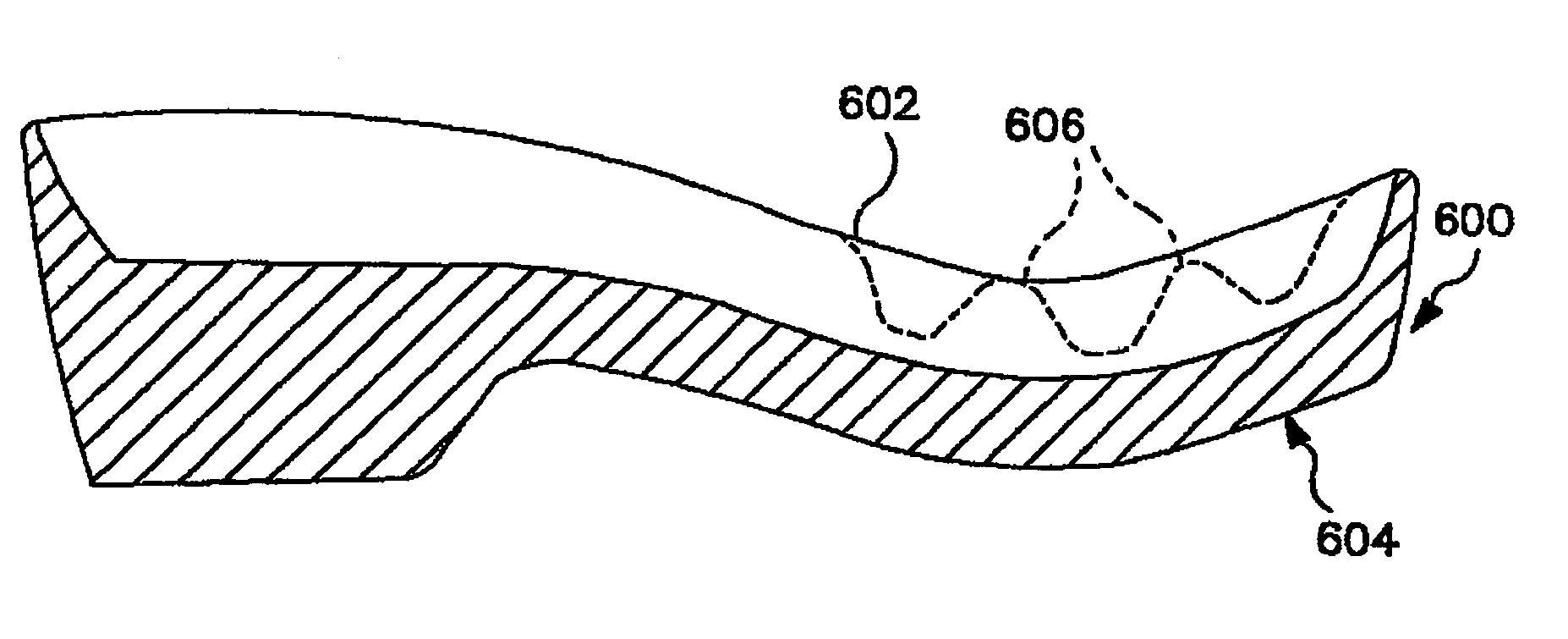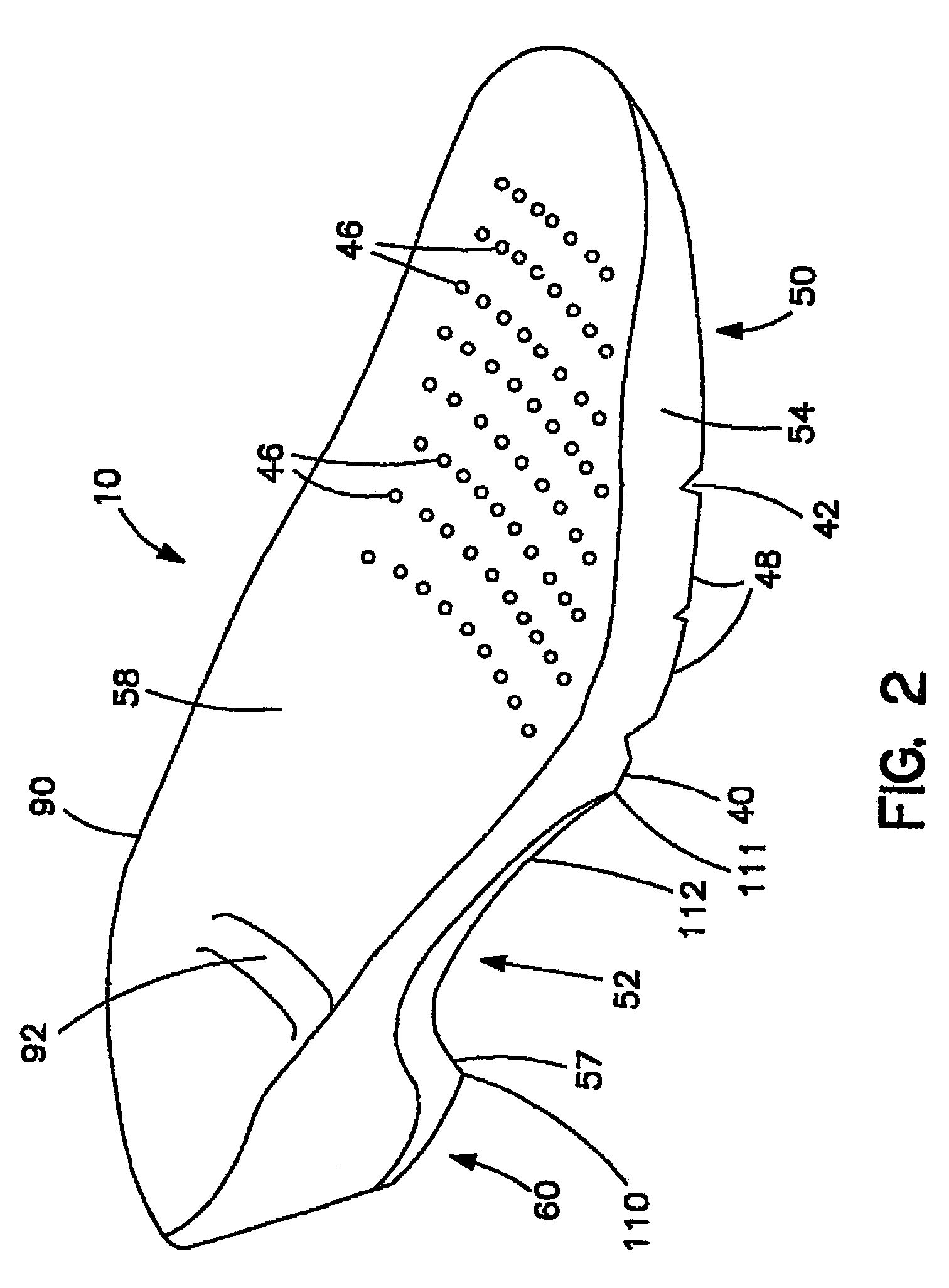To date, prior art footwear constructions have failed to successfully combine the essential features of an ideal design.
Prior attempts to create the ideal footwear design have been unsuccessful largely because prior structures have emphasized one of the above-noted features to the detriment of others.
Furthermore, prior attempts to construct an ideal footwear design have failed to consider the importance of other key features such as industrialized construction, style and fashion.
First, such conventional footwear designs are provided with an outsole.
The conventional footwear
cushioning components and their positioning within the footwear structures of prior art constructions have several undesirable characteristics.
The footwear midsole and insole components are typically made of various foam and rubber materials which are subjected to repeated application of
impact forces and stress which cause
compression set, degradation, and fatigue resulting in reduced resiliency and failed
cushioning properties.
The midsoles in prior art footwear constructions have several undesirable characteristics.
For example, the
consumer at the point of purchase is unable to make an alternative choice in the cushioning characteristics of the midsole without selecting separate footwear designs.
Also, the wearer is unable to replace the midsole component after it has degraded and lost its ability to provide adequate cushioning and support.
In addition, the attachment of the midsole to other components in the footwear structure such as the top surface of the outsole, abutting outsole side wall interior surfaces, and to the formed upper negate the ability of the midsole component to adequately compress, deform, and rebound while providing maximum cushioning.
Another undesirable feature of prior art designs is that the ability of the footwear structure to provide maximum cushioning of the foot structures at the appropriate instant in the
gait cycle is negated in prior footwear constructions by the positioning of semi-rigid and rigid structural elements in close proximity to the wearer's foot.
All of these semi-rigid and rigid structural elements negate the performance and cushioning ability of the midsole, and therefore negatively
impact user comfort.
This formed structure also negates the performance and cushioning ability of the midsole, to the detriment of user comfort.
Furthermore, prior art midsoles have external surfaces, especially along the side portions thereof, which are exposed to environmental conditions such as heat, cold, water,
ultraviolet rays, abrasion from rocks, sand, soil, punctures from sharp pointed objects, and cuts from sharp edged objects.
The environmental conditions contribute to the failure of midsole component cushioning in two main ways: degradation of the midsole cushioning materials, and destruction of the means by which the midsole cushioning component is attached to the footwear structure.
Another undesirable feature of prior art designs is that the thin cushioning insole which is positioned between the top surface of the lasting insole or midsole and the wearer's foot is typically too thin to provide optimal cushioning.
These structures, however, remain encumbered by undesirable characteristics.
Unfortunately, the midsole insert and
cushion elements must conform to a matching lift height of the
peripheral midsole member.
Thus, the method of construction is complex and inefficient, and does not provide for maximum full perimeter cushioning since the rigid
peripheral member is in close proximity to the user's foot.
The structure also has no means of providing for a midsole insert for a raised
heel design typically found in dress, casual shoe, and boot constructions, and fails to provide air circulation within the structure.
 Login to View More
Login to View More 


